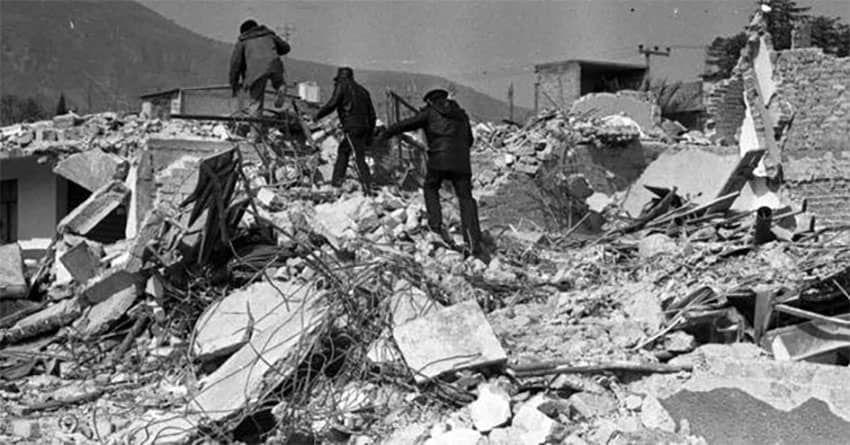“Something like this should never happen.” Those are the words of Efraín García Domínguez, a survivor of the San Juanico explosions, one of the world’s worst industrial disasters.
Tuesday is the 35th anniversary of the disaster than rocked – and burned – San Juan Ixhuatepec, a neighborhood just north of Mexico City in the México state municipality of Tlalnepantla.
In the early morning of November 19, 1984, a series of huge explosions at a Pemex liquid petroleum gas (LPG) storage plant and the massive fire they triggered killed between 500 and 600 people and left as many as 7,000 others with severe burns.
About one-third of Mexico City’s LPG supply, some 11,000 cubic meters, burned in the fire following the explosions, which authorities said were caused by a gas pipe that ruptured due to excessive pressure.
In the lead-up to the anniversary of one of Mexico’s darkest days, the state news agency Notimex spoke with survivors of the disaster, who described the intense heat, thick smoke and atmosphere of fear that enveloped San Juan Ixhuatepec 35 years ago.
“Fortunately, my parents’ house was far from the point of the explosions but when I went out to the street, it felt like my face was burning because of the blaze of fire,” said García Domínguez, a mechanic who was 16 when the disaster occurred.
“. . . There was a lot of smoke and you could see ash falling as if it were rain,” he added.
García, who lost friends in the disaster, recalled being awoken by his mother’s screams after the first explosion. He also said that he experienced a sensation akin to being in hell.
“My mother told me that if I behaved badly I would go to hell and . . . that those who behave badly burn in that place. When the first explosion occurred at 5:40am . . . I innocently thought that I was already in hell because of the intense heat,” García said.
The now 51-year-old said that he and his family rushed out of their home not knowing what had happened although it was clear that they were in danger because all the windows of their house – two kilometers from the Pemex plant – had broken and the walls were shaking.
“The heat was unbearable, we couldn’t breathe, that was enough reason to escape,” García said, explaining that he and his family went to his aunt’s house in Mexico City.

“Through an uncle who didn’t leave we found out about the tragedy of entire families who burned to death. The whole neighborhood burned, what happened was worse than the 1985 earthquake,” he added.
Elvira Castro Vazquéz, a 72-year-old who still finds it difficult to talk about the disaster, agreed.
“I never heard of a such a tragedy again. I remember that the [Mexico City] earthquake the next year was devastating but in the face of nature’s power, you can’t do much. But when we’re talking about human errors, that’s when you feel more anger,” she told Notimex during an interview alongside her 77-year-old husband, Juan Camacho.
Castro recalled that she, her husband, their four children and many other residents fled San Juan Ixhuatepec on foot, knowing instinctively that they were in danger.
“. . . There was no public transportation so we walked along the train tracks until we arrived at the lower slopes of the Chiquihuite hill, where people helped us,” she said, struggling to hold back tears.
“It looked like a pilgrimage. A lot of people escaped along the tracks, we walked in the direction of the [Mexico City] borough Gustavo A. Madero and people were saying, ‘this is the end of the world,’” Castro added.

“Everybody was scared . . . there was another explosion and then more followed so we quickened our pace until Mrs. Agripina, who lived on Chiquihuite avenue, offered us a place to stay and eat breakfast. Since then I’ve lived in gratitude to her,” she said.
Camacho recalled that a neighbor left his home early that day to sell tacos outside the Pemex plant.
“He used to sell in the school area on the Politécnico Nacional avenue but it was far from his home so he decided to go to the gas plant . . . He lost his life in his eagerness to work,” he said.
“Everything felt like hell itself, or a subsidiary of it. I remember the gigantic flames that were seen from afar and the scorching heat that burned out skin and restricted our breathing,” Camacho added.
Smaller explosions continued at the plant until the morning of the next day as more and more gas tanks were consumed by flames. Almost 150 homes were completely destroyed in the disaster.
In December 1984, the federal Attorney General’s Office determined that Pemex must take responsibility for the explosions and pay compensation to victims.
However, some people claimed that they never received a peso even though they were burned or their homes were damaged by the explosions or ensuing fire.
Source: Notimex (sp)
